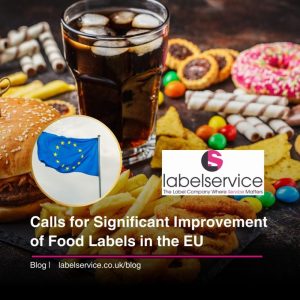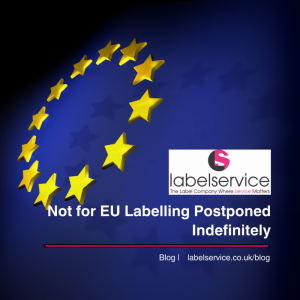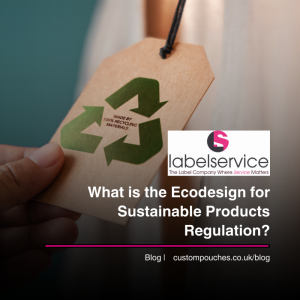The UK Competition and Markets Authority (CMA) has launched a review into grocery labelling systems following pressure from consumer groups. Inconsistencies in unit pricing, a system that displays products’ costs with reference to weight or volume, could cause confusion among cash-strapped consumers, campaigners say.
UK consumer group Which? said food and beverages labels using different metrics prevent consumers from being able to compare prices accurately. “People shopping for food and other essential products need confidence that they have the right information to make great choices and are getting fair deals,” the CMA said. “It is important that shoppers who look at the prices of products should be able to compare like for like.”
The pricing review, launched on 31 January, will look at unit pricing, whether retailers are compliant with the law and consumer awareness of unit pricing information. It will analyse both online and in-store shopping.
It follows a 2015 investigation following a “super-complaint” lodged by Which? over misleading special offers, unit pricing inconsistencies, pack size reductions and false price-matching schemes. Sue Davies, Which? head of food policy, said: “Grocery prices are a huge concern as households all over the country grapple with the cost-of-living crisis, so it’s timely and important for the CMA to be looking at whether prices are clearly and fairly displayed at the supermarket.
“We know poor, inconsistent and sometimes missing price information is a problem and that’s why Which? is campaigning for pricing transparency from supermarkets, so that shoppers can easily work out which products are the best value.” George Lusty, CMS senior director for consumer protection said: “We know that the increased cost of living has hit the pound in people’s pockets. That’s why we’re pressing on with this important grocery unit pricing work to ensure shoppers can more easily compare prices and make choices that are right for them.”
Misleading Green Claims
As consumers become more interested in the environmental impact of their products and services, businesses are facing intense pressure to be greener…but this also gives way for a new type of fraud.
Food, being the oldest commodity in human history, is a constantly evolving commodity. As consumer demands change and our world shifts, businesses are obliged to follow social and economic trends to gain and maintain value. Across the world, major players in the expansion of industrial agriculture are turning to ‘green finance’ to raise money. They include oil palm plantation companies, fish farming behemoths, coffee and soy plantations, meat and dairy giants, pesticide producers and commodity traders. In fact, agribusiness is one of the fastest growing sectors in the global market for so-called thematic financing instruments – green, social or sustainable.
While capital availability for investments in green practices surpasses any previous standard, the consumers drive the demand for sustainable and fair products to unprecedented levels. The consequence is a large opportunity for criminals to gain profits by using misleading claims and declarations for products in the general trend for ESG (environmental social governance). In other words, greenwashing in food industry tends to be the new food fraud.
Britain’s competition regulator will consider whether companies selling food, drink and toiletries are wrongly labelling products as “sustainable” or “better for the environment” in its latest probe into greenwashing. The regulator believes companies may be exaggerating their green credentials in an attempt to woo climate-conscious consumers in Britain’s fast moving consumer goods sector which is worth 130 billion pounds ($160 billion) a year.
Britain’s Competition and Markets Authority (CMA) announced the review on Thursday, a year after it started looking into misleading green claims in the fashion industry. Clothing retailers ASOS (ASOS.L), Boohoo (BOOH.L) and supermarket Asda’s brand George were still being investigated, the CMA said. The new probe will cover food, drink, cleaning products, toiletries and personal care items such as toothpaste and laundry detergent, the CMA said.
Major players in the sector include Unilever , Nestle (NESN.S), Coca-Cola (KO.N) and Procter & Gamble (PG.N), as well as manufacturers of private-label products for supermarkets. The CMA said it would scrutinise big and small companies. Depending on what it finds, the regulator said it could consider taking enforcement action or opening an investigation into a specific company. “We’re concerned many shoppers are being misled and potentially even paying a premium for products that aren’t what they seem,” CMA chief executive Sarah Cardell said. “Now is a good time for businesses to review their practices and make sure they’re operating within the law.”
Embedding strong sustainability practices represents a huge opportunity for the private sector, as it helps create long-term value for their business. In fact, according to environmental agency Client Earth, 66 percent of consumers are happy to pay more for environmentally friendly products.
A very solid and secure way to prove the authenticity of green products is to monitor, verify and control their geographical origin through analytical testing. Advanced traceability and verified origin tools are able to support companies involved in different industry sectors and help them progress towards a sustainable, ethical and traceable supply chain. Today, high-end fingerprinting technology provides a solid solution for the verification of country of origin, source regions, production sites, supply chain nodes and local sourcing.
Same Issues in the U.S.
Online food retailers do not consistently display nutrition information on their websites—and U.S. laws are lagging behind in mandating the same labelling required for foods sold in brick-and-mortar stores, according to a new analysis by researchers from the NYU School of Global Public Health and the Friedman School of Nutrition Science and Policy at Tufts University.
“Information required to be provided to consumers in conventional grocery stores is not being uniformly provided online—in fact, it only appears on roughly a third of the online grocery items we surveyed,” said Jennifer Pomeranz, an assistant professor of public health policy and management at the NYU School of Global Public Health and lead author of the study, which was published in Public Health Nutrition. “Our study shows that the online food shopping environment today is a bit of a ‘Wild West,’ with incomplete and inconsistent provision of required nutrition information to consumers,” said Dariush Mozaffarian, dean of the Friedman School and the study’s senior author. “Online shopping will only continue to grow, and this creates an excellent opportunity to positively influence consumers to make healthy and safe choices. We need to leverage this chance to help make progress against the nutrition-related health crisis in this country.”
Online grocery shopping was already rapidly growing before COVID-19 emerged, but the pandemic has greatly accelerated its use. From 2019 to 2020, online grocery sales in the U.S. tripled from 3.4% to 10.2% of total grocery sales, and are projected to reach 21.5% of total sales by 2025. In addition, the United States Department of Agriculture (USDA) started a pilot program in 2019 to allow Supplemental Nutrition Assistance Program (SNAP) participants to purchase groceries online.
Outpacing Regulatory Attention
However, this rapid growth in online grocery shopping has outpaced regulatory attention to information appearing on foods sold online. While U.S. law requires nutrition facts, allergen information, and ingredient lists to appear on the physical packaging of food products, these regulations do not currently extend to online retailers. As a result, crucial health and safety information may not be available to online grocery shoppers.
To better understand the landscape of what information appears with online groceries, the researchers analysed 10 major products across nine major online grocery retailers to identify what information is displayed. They focused on bread, cereals, and drinks—packaged foods that are required by the Food and Drug Administration (FDA) to have a standardized information panel disclosing nutrition facts, a list of ingredients, common food allergens, and, for fruit drinks, the percent juice. The researchers also reviewed the federal government’s legal authorities and limitations for requiring online food retailers to disclose nutrition information.
They found that this information was included and legible, on average, only 36.5% of the time across the products and retailers. Potential allergens were only disclosed on 11.4% of products, while nutrition facts and ingredients lists were each present only about half the time (45.7% and 54.2%, respectively). In contrast, marketing health and nutrition-related claims such as “low sodium” on online product images were more common, appearing on 63.5% of products.
“Our findings highlight the current failure of both regulations and industry practice to provide a consistent environment in which online consumers can access information that is required in conventional stores,” said study author Sean Cash, the Bergstrom Foundation Professor in Global Nutrition at the Friedman School. “With the expectation that online grocery sales could top $100 billion for 2021, the requirements to provide consumers with information need to keep up with the evolving marketplace.”
The researchers then reviewed the federal government’s legal authorities and limitations for requiring online food retailers to disclose nutrition information. They identified three federal agencies that have existing regulatory authority over food labelling (the FDA), online sales and advertising (the Federal Trade Commission, or FTC), and SNAP retailers (the USDA). The researchers conclude that these agencies’ existing authorities can be leveraged to address gaps in labelling requirements in the online food retail environment.
“The federal government can and should act to require that online food retailers disclose required nutrition and allergen information to support consumer health and informed decision-making,” concluded Pomeranz. Failing to consistently disclose this information on food products may present safety concerns for consumers who depend on it, as in the case of allergens, sodium, or sugar, according to the researchers.
Labeling requirements are intended to protect consumers who are largely unable to protect themselves. This is even more salient for online sales where consumers cannot directly inspect products. At a minimum, the entire required nutritional information panel should be made visible and legible for consumers shopping for their groceries online.

















